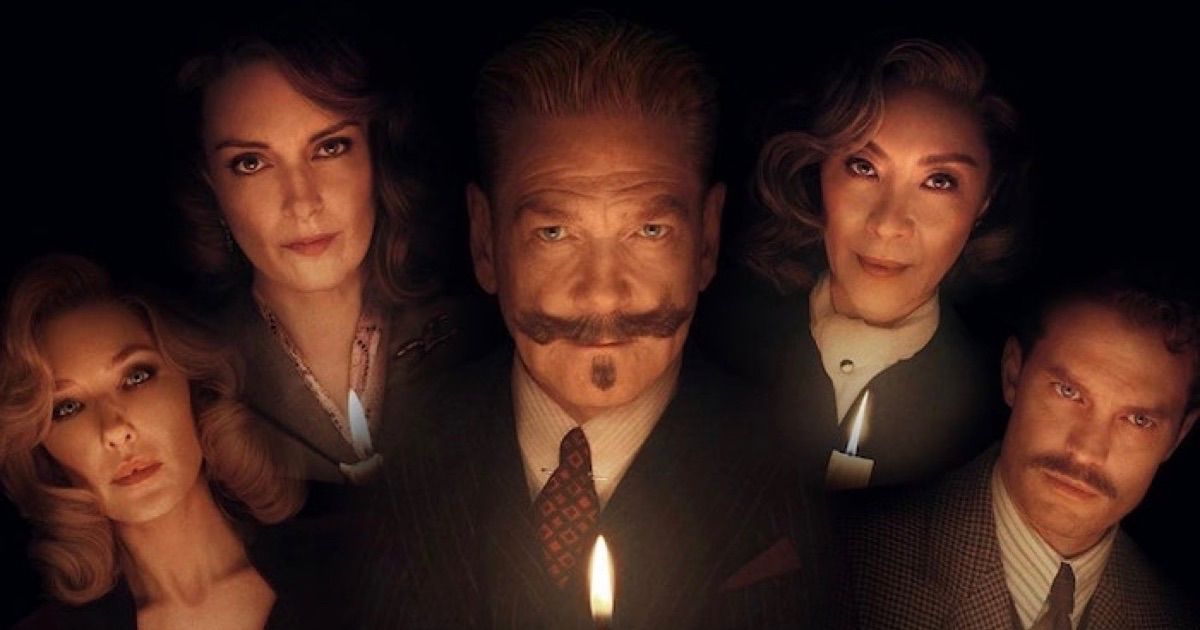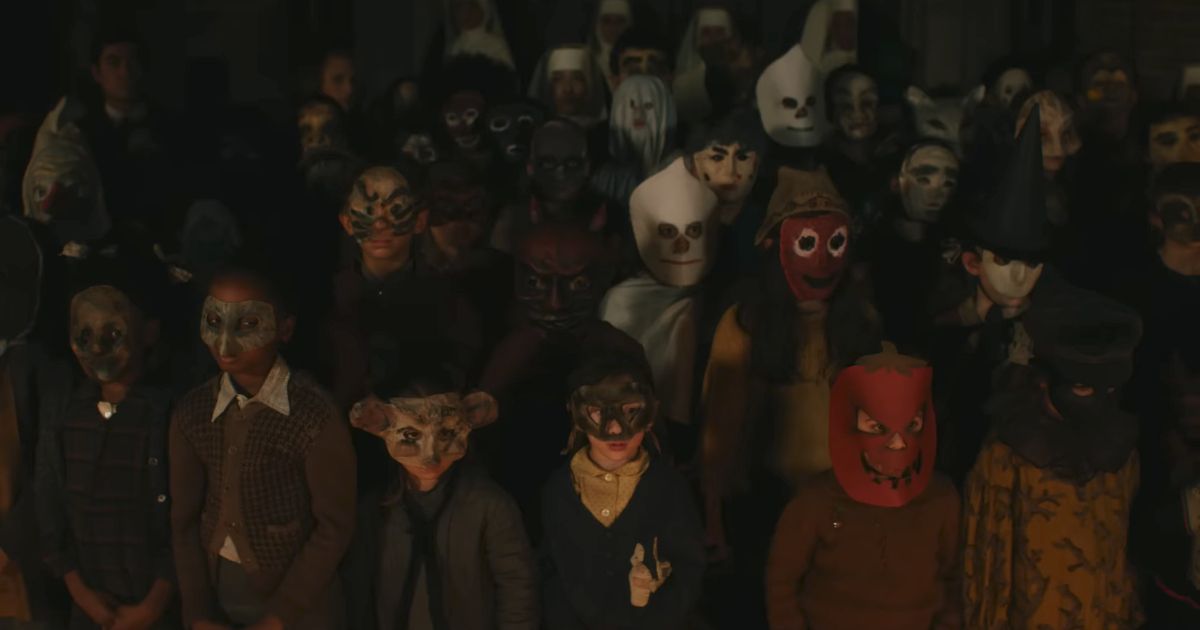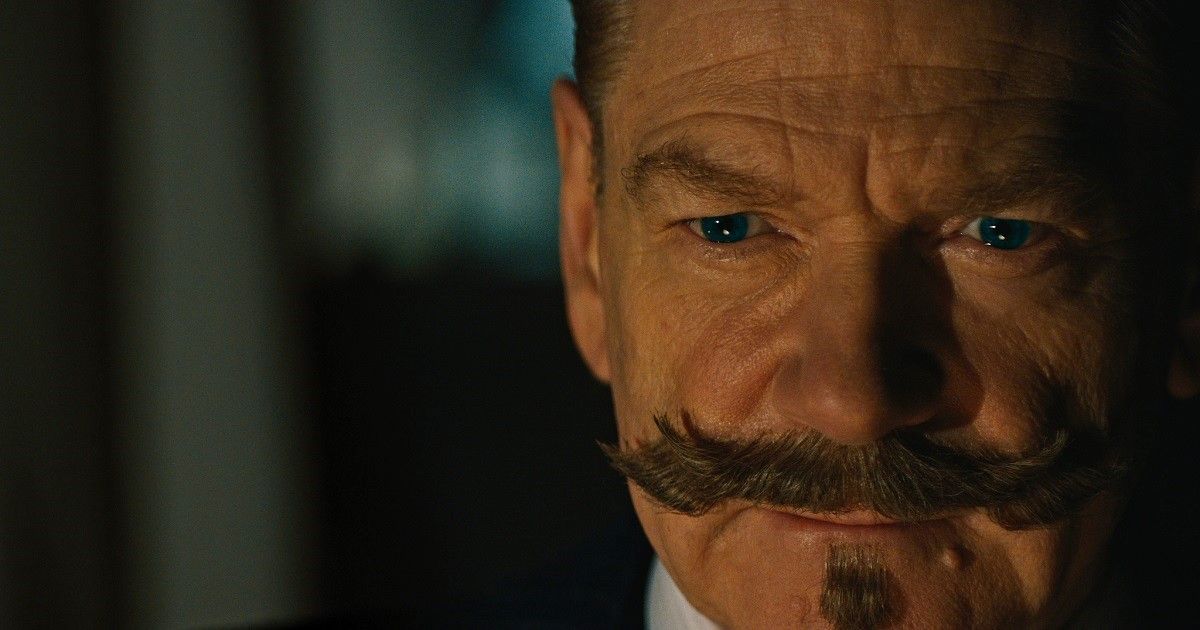Murder and mystery enthusiasts are flocking to see A Haunting In Venice (2023) this weekend, the third release in Hercule Poirot’s rebooted franchise that began with the incredible Murder on the Orient Express (2017) and continued with Death on the Nile (2022).
While the sophomore effort of Nile was a disappointment compared to Orient, this third effort will likely prove Poirot’s supremacy as a gumshoe, and we’ll espouse the secrets behind the movie’s deeper meanings and incredible real-life origins!
This Story Isn’t All Fiction
It’s worth noting that Agatha Christie was a skeptic, and this particular tale – A Haunting In Venice (2023) involves spiritualism, séances, and the occult – quite the departure from her literary norm. One must ask the obvious question – why did she write about something she didn’t believe in? Well, Christie wanted to broach the subject of false spiritualism while informing readers of the genuine, life-threatening dangers affiliated with an organized occult. During the industrial era that defined the Elizabethan age and under the charcoal-choked, smoggy gray skies – London became enraptured in something nefarious. It was called spiritualism. This occultist elite cadre turned more or less into a mafia that purported to contact and have physical interaction with the dead.
None of it was true, of course, all supernatural chicanery, smoke, and mirrors. During this time, however, the spiritualists were making a financial killing by swindling and conning good-hearted widows and widowers into handing over their life savings for just one more moment with their loved ones on the other side.
Agatha Christie saw this disingenuous cold-reading and dark room whispering for the fraud it was and became interested in ways to expose the spiritual charlatans for what they were. Luckily for Agatha, she had a long-time ally in the hard-fought war against false metaphysics – one Harold ‘Eric Wiesz’ Houdini – who eventually inspired the script for A Haunting In Venice.
Sherlock Holmes Wasn’t All That Great
Hercule Poirot and Sherlock Holmes were theoretical contemporaries, although Holmes would (in literary terms) be a bit older than Poirot. But Holmes was created by Sir Arthur Conan-Doyle, a firm believer in the spiritualist occult. Doyle himself defied contemporary Harry Houdini to concretely dispel the séance and Ouija group, and thus we see the axis built upon two different styles of investigation – Houdini and his abduction, and Doyle and what would later become Holmes’ investigative deduction and induction.
The problem is that Sherlock Holmes wasn’t all that great. He was flawed. Created by a flawed spiritualist, Sir Arthur Conan-Doyle, the most well-known detective in the world, likely wouldn’t have solved most of his cases. Unfortunately, his particular skills are said to have been deduction, but that is false – and not just because he was a fictional creation.
Holmes’ distinctive investigative skills involved abduction. What’s the difference? Deduction that starts from premises that are correct and leads to conclusions that are completely true. Abduction, however, starts with observations from which it seeks to find the simplest and most likely conclusions. Hercule Poirot uses deduction, and Sherlock Holmes uses abduction – which is tantamount to a parlor trick, the prototype of what false psychics call “cold reading.” Hence, savvy mystery enthusiasts of the time noted an inevitable collision on the horizon!
Hercule Poirot Versus Sherlock Holmes?
Harry Houdini – the well-known and often incorrectly biographized stage magician escape artist – put all of his efforts, after leaving show business, into systematically dismantling spiritualism and leaving it in disrepute. And this is the crux of where Hercule Poirot was born. Agatha Christie saw Houdini’s crusade as an act of heroism designed to free humanity from its mystical occlusion. Inspired by a desire to lend aid to this cause – Christie wrote A Haunting In Venice as an homage to Houdini and his righteous fight against false prophets in the guise of spiritualists.
Often at odds against the occult and considering himself a true skeptic, Houdini wanted very badly to believe in a continuation of the individual personality after death, yet he never in all of his spiritualism investigations came across any hard evidence. It is here, opposite and against his contemporary rival Conan-Doyle. That’s right – it was Sherlock Holmes’s daddy versus the eponymous magician and inspiration for Hercule Poirot. Two geniuses, both pivoted against each other on the chessboard of history. What would happen?
A Haunting In Venice illustrates what transpires during this great encounter and who falls during the massive spiritual battle of Elizabethan England! Ultimately, knowing the true crime and real-life stories behind the inspiration for A Haunting In Venice will bring a deeper level of understanding vis-a-vis the plot and the characters as well as the settings. Understand that when viewing this film, one is not simply watching Poirot but also Sherlock Holmes, Arthur Conan Doyle, and Harry Houdini. These ghosts join alongside us in the audience, and they’re trying to send us a message from the distant past. Watch A Haunting In Venice and listen carefully!
This story originally appeared on Movieweb



